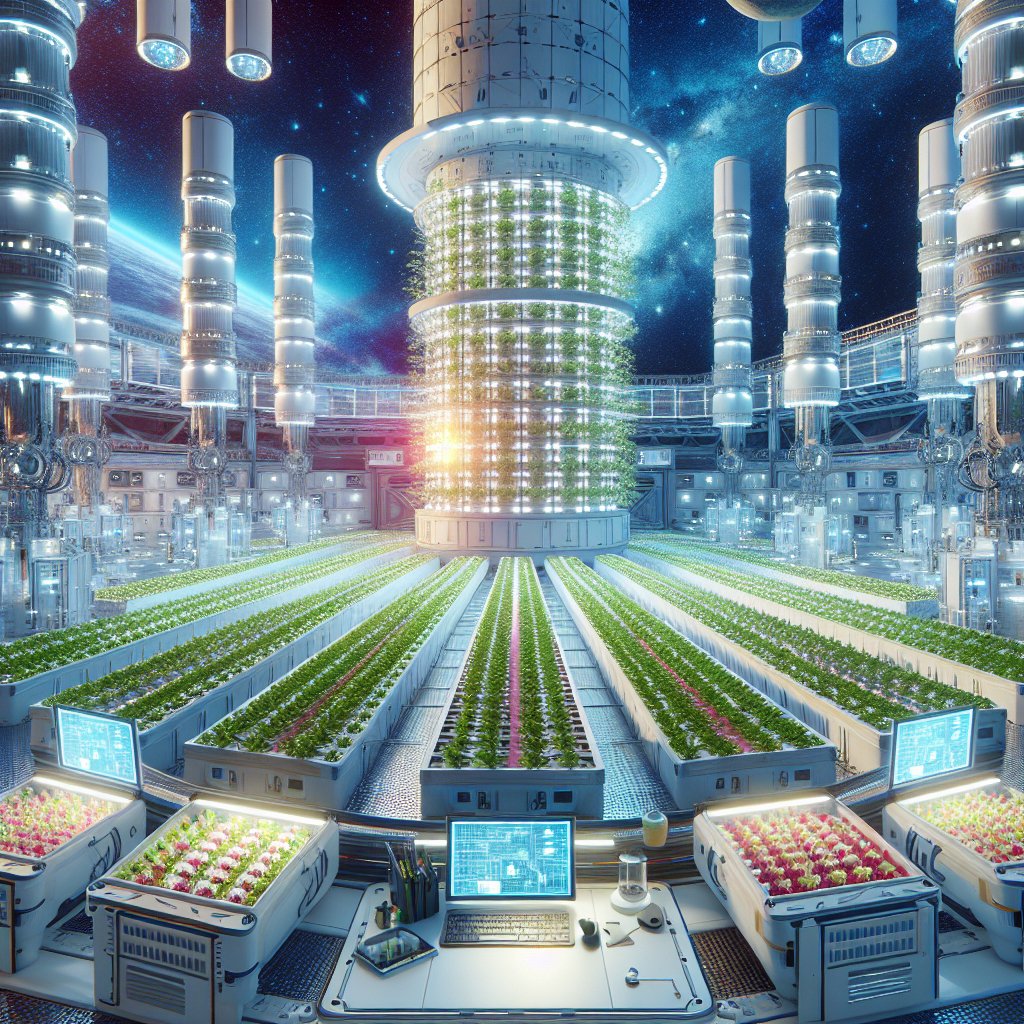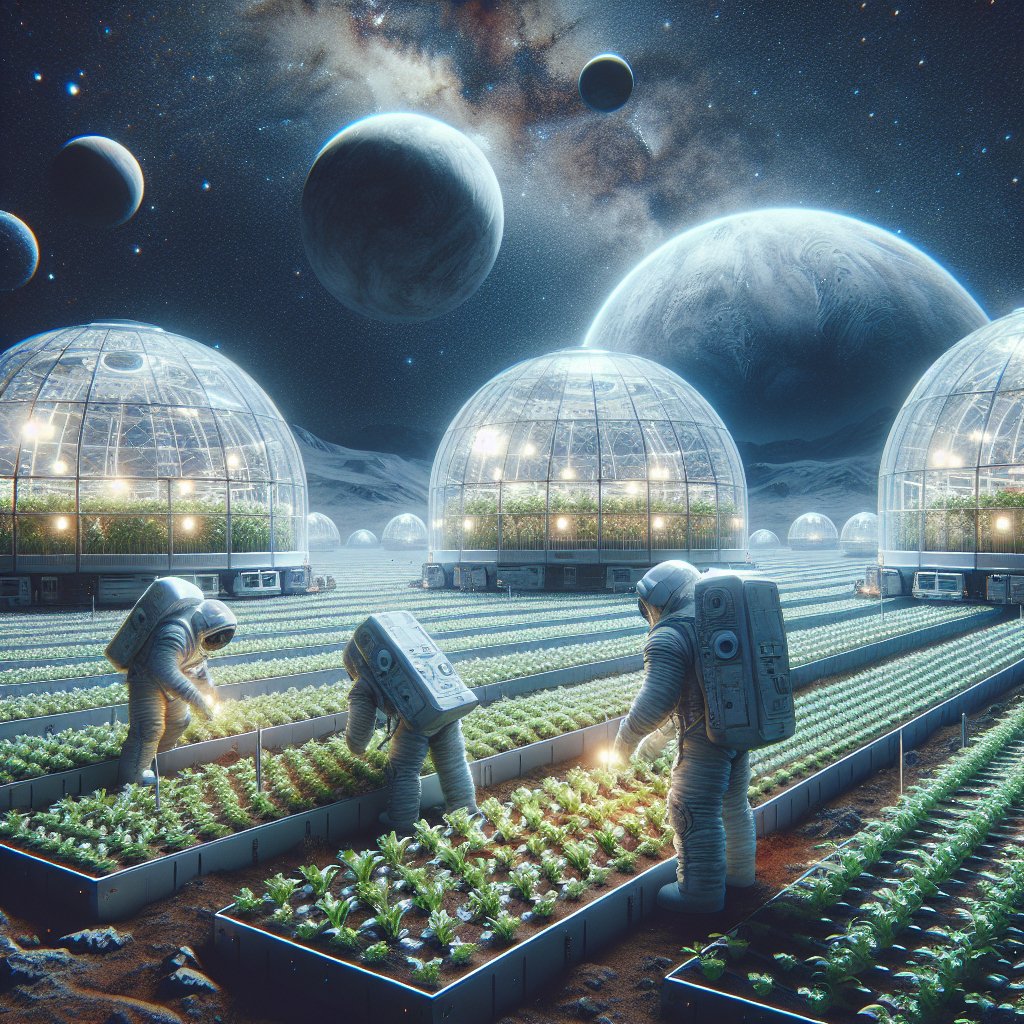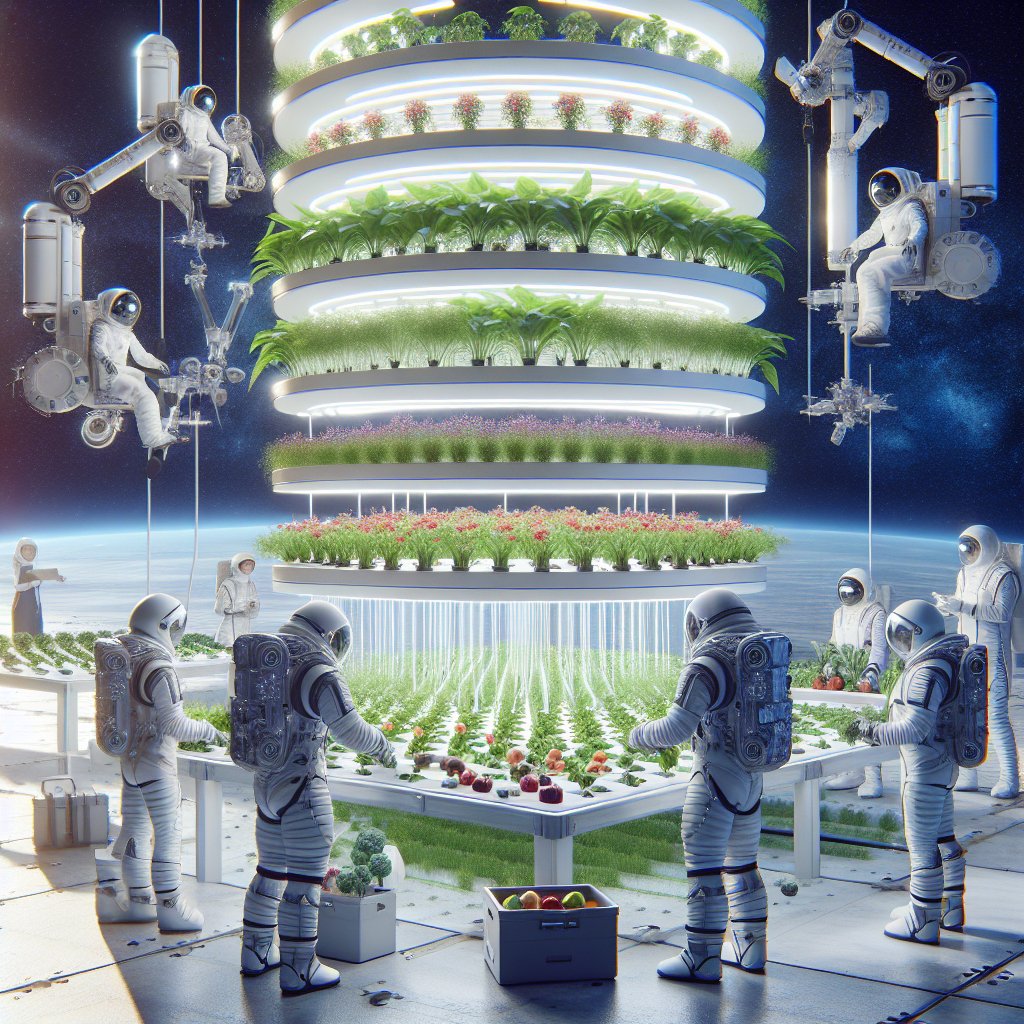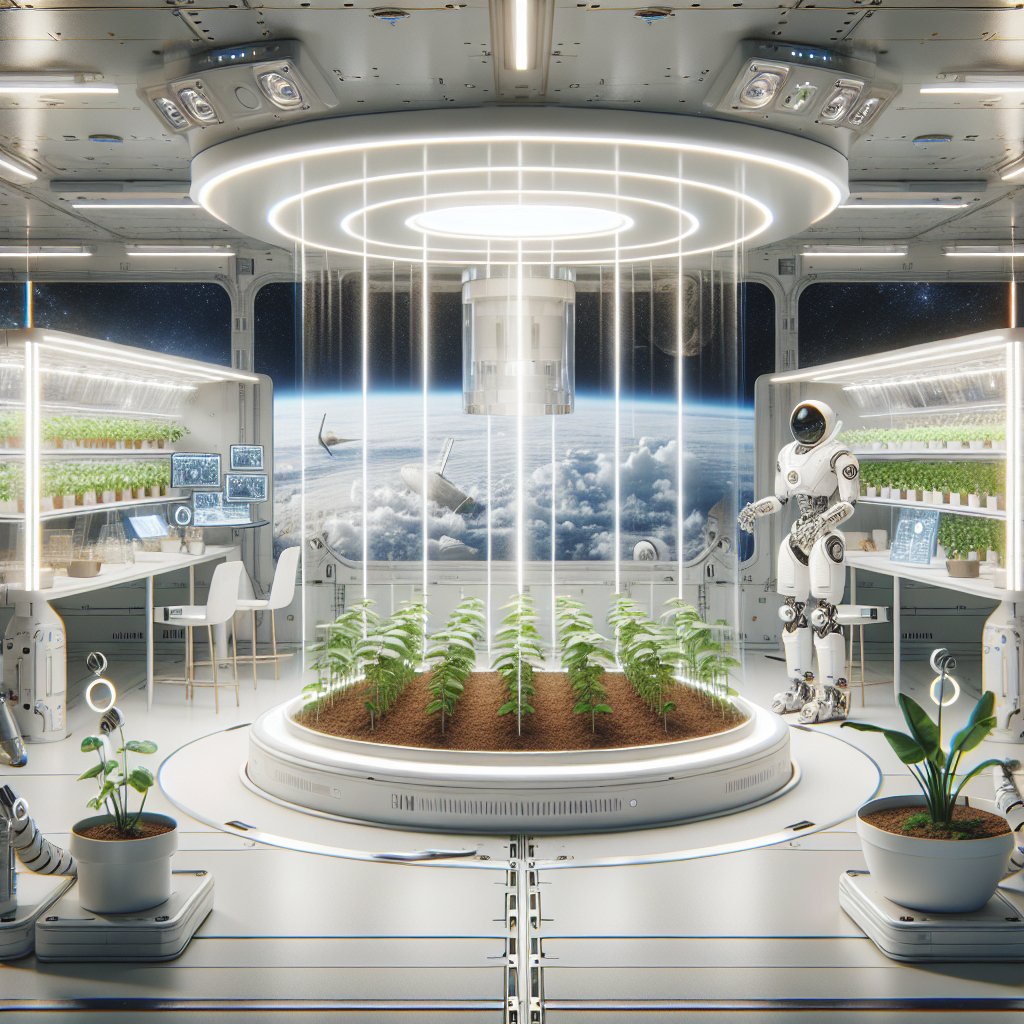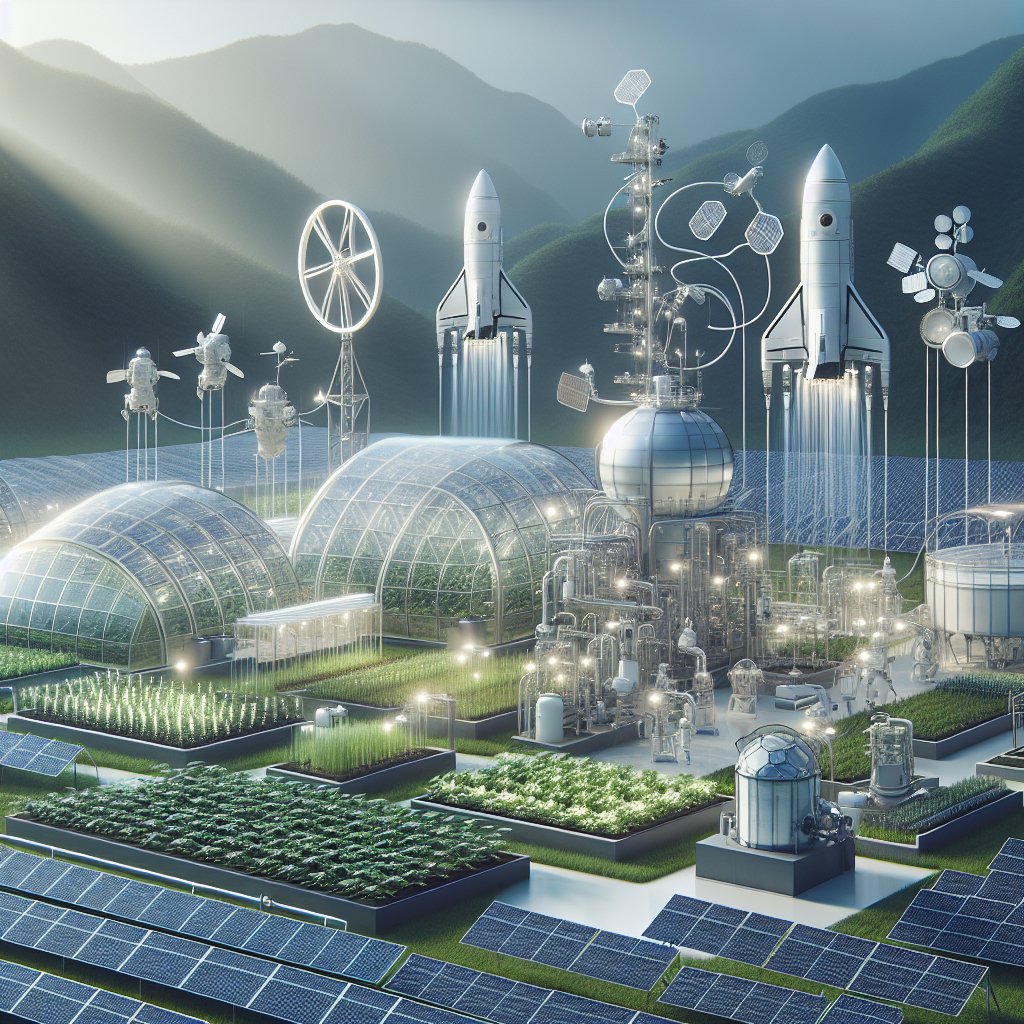The future of global food supply and space agriculture is an intriguing intersection of two critical fields: the need for sustainable food production on Earth and the exploration of outer space. As the global population continues to rise, the demand for food is increasing at an unprecedented rate. Simultaneously, the exploration of space presents unique challenges and opportunities for agricultural innovation. This article delves into the potential of space agriculture to address food security on Earth and the implications of these advancements for our future.
Chapter 1: The Challenges of Global Food Supply
As we look towards the future, the challenges facing global food supply are becoming increasingly apparent. With the world population projected to reach nearly 10 billion by 2050, the demand for food will rise significantly. This surge in population will place immense pressure on agricultural systems, which are already strained by climate change, resource depletion, and environmental degradation.
1.1 Climate Change and Its Impact on Agriculture
Climate change poses one of the most significant threats to global food security. Rising temperatures, shifting precipitation patterns, and increased frequency of extreme weather events can disrupt traditional farming practices. For instance, droughts can lead to crop failures, while floods can destroy entire harvests. Farmers are increasingly required to adapt to these changing conditions, often with limited resources and support.
1.2 Resource Depletion
The agricultural sector is heavily reliant on natural resources, particularly water and arable land. However, many regions are experiencing water scarcity due to over-extraction and pollution. Additionally, soil degradation and urbanization are reducing the amount of available arable land. As these resources become scarcer, the challenge of feeding a growing population becomes even more daunting.
1.3 Food Waste
Another critical issue contributing to food insecurity is food waste. It is estimated that approximately one-third of all food produced globally is wasted, either during production, transportation, or consumption. Addressing this issue requires innovative solutions to improve supply chain efficiency and consumer awareness.
Chapter 2: The Promise of Space Agriculture
In light of these challenges, space agriculture emerges as a promising solution to enhance food production both on Earth and beyond. The concept of growing food in space is not merely a futuristic idea; it is a necessity for long-duration space missions, such as those planned for Mars. However, the technologies and methods developed for space agriculture can also be applied to improve agricultural practices on Earth.
2.1 Hydroponics and Aeroponics
One of the most significant advancements in space agriculture is the development of hydroponic and aeroponic systems. These soil-less growing methods allow plants to thrive in controlled environments, using nutrient-rich water solutions or mist. Such systems are particularly advantageous in space, where traditional farming methods are impractical due to limited resources and space constraints.
2.2 Controlled Environment Agriculture (CEA)
Controlled Environment Agriculture (CEA) encompasses a range of technologies designed to optimize plant growth by controlling environmental factors such as temperature, humidity, and light. CEA systems can be implemented in urban settings, reducing the need for transportation and minimizing the carbon footprint associated with food production. The lessons learned from CEA in space can lead to more efficient and sustainable agricultural practices on Earth.
2.3 Genetic Engineering and Crop Resilience
Advancements in genetic engineering are also playing a crucial role in the future of agriculture. By developing crops that are more resilient to climate change, pests, and diseases, scientists can help ensure food security in an uncertain future. Space missions provide a unique opportunity to study plant growth in microgravity, leading to potential breakthroughs in crop genetics that could benefit both space and terrestrial agriculture.
Chapter 3: The Intersection of Space Exploration and Earth Agriculture
The relationship between space exploration and Earth agriculture is symbiotic. Innovations developed for space missions can lead to significant improvements in agricultural practices on Earth, while the challenges faced in feeding a growing population can inform research and development in space agriculture.
3.1 Research Collaborations
Collaborative research efforts between space agencies, agricultural institutions, and universities are essential for advancing the field of space agriculture. By pooling resources and expertise, these collaborations can accelerate the development of technologies that benefit both space missions and Earth-based agriculture.
3.2 Education and Public Engagement
Raising awareness about the importance of space agriculture and its potential benefits for food security is crucial. Educational programs that highlight the connection between space exploration and sustainable agriculture can inspire the next generation of scientists and innovators. Engaging the public in discussions about food security and space exploration can foster a greater understanding of the challenges and opportunities that lie ahead.
Chapter 4: The Future of Food Production
As we look to the future, the integration of space agriculture into our food production systems holds great promise. By leveraging the technologies and insights gained from space exploration, we can develop more resilient and sustainable agricultural practices that address the challenges of feeding a growing global population.
4.1 Policy and Investment
To realize the potential of space agriculture, it is essential to invest in research and development, as well as to create supportive policies that encourage innovation. Governments, private companies, and international organizations must work together to prioritize food security and sustainable agricultural practices in the context of space exploration.
4.2 A Sustainable Future
The future of global food supply and space agriculture is intertwined. By embracing the challenges and opportunities presented by both fields, we can create a more sustainable and secure food system for generations to come. The lessons learned from space agriculture can help us address the pressing issues of food security on Earth, ultimately leading to a healthier planet and a more resilient global community.
Conclusion
The exploration of space and the quest for sustainable food production are two of the most significant challenges of our time. As we continue to push the boundaries of human knowledge and capability, the innovations developed for space agriculture will play a crucial role in shaping the future of global food supply. By investing in research, fostering collaboration, and engaging the public, we can ensure that the advancements made in space will benefit not only astronauts but also the billions of people who call Earth home.
